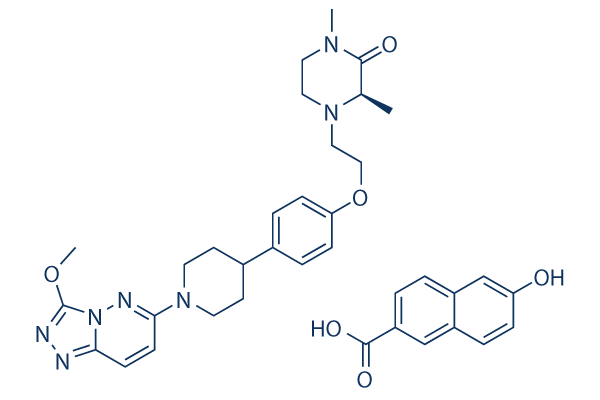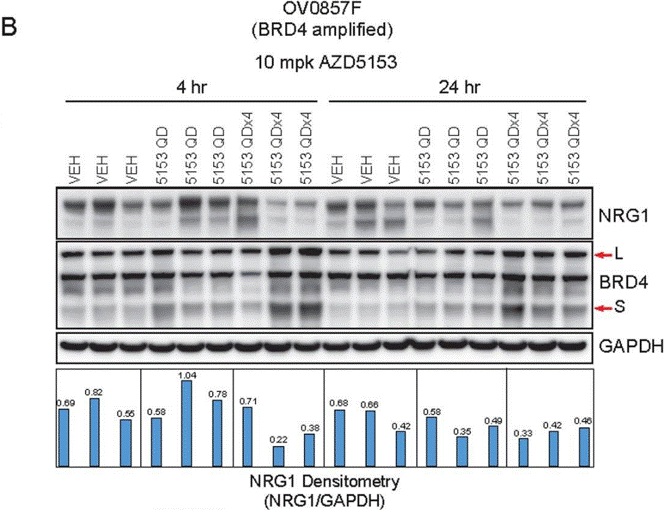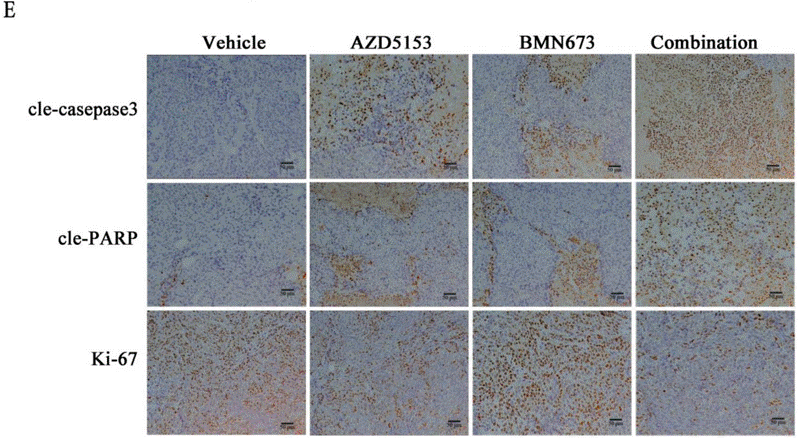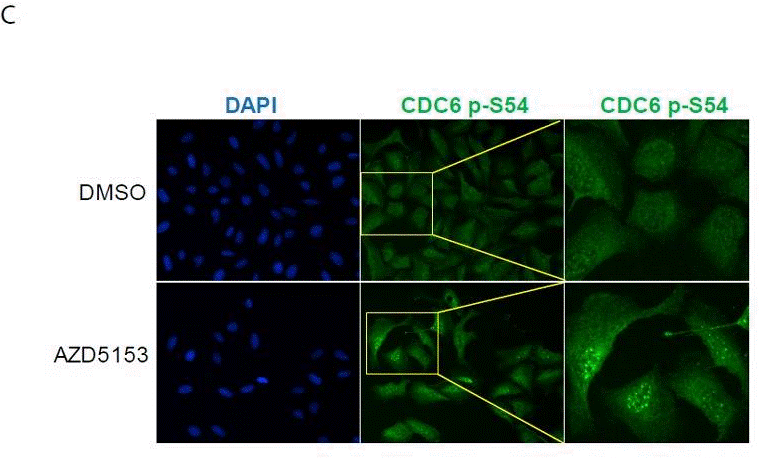
- Bioactive Compounds
- By Signaling Pathways
- PI3K/Akt/mTOR
- Epigenetics
- Methylation
- Immunology & Inflammation
- Protein Tyrosine Kinase
- Angiogenesis
- Apoptosis
- Autophagy
- ER stress & UPR
- JAK/STAT
- MAPK
- Cytoskeletal Signaling
- Cell Cycle
- TGF-beta/Smad
- DNA Damage/DNA Repair
- Compound Libraries
- Popular Compound Libraries
- Customize Library
- Clinical and FDA-approved Related
- Bioactive Compound Libraries
- Inhibitor Related
- Natural Product Related
- Metabolism Related
- Cell Death Related
- By Signaling Pathway
- By Disease
- Anti-infection and Antiviral Related
- Neuronal and Immunology Related
- Fragment and Covalent Related
- FDA-approved Drug Library
- FDA-approved & Passed Phase I Drug Library
- Preclinical/Clinical Compound Library
- Bioactive Compound Library-I
- Bioactive Compound Library-Ⅱ
- Kinase Inhibitor Library
- Express-Pick Library
- Natural Product Library
- Human Endogenous Metabolite Compound Library
- Alkaloid Compound LibraryNew
- Angiogenesis Related compound Library
- Anti-Aging Compound Library
- Anti-alzheimer Disease Compound Library
- Antibiotics compound Library
- Anti-cancer Compound Library
- Anti-cancer Compound Library-Ⅱ
- Anti-cancer Metabolism Compound Library
- Anti-Cardiovascular Disease Compound Library
- Anti-diabetic Compound Library
- Anti-infection Compound Library
- Antioxidant Compound Library
- Anti-parasitic Compound Library
- Antiviral Compound Library
- Apoptosis Compound Library
- Autophagy Compound Library
- Calcium Channel Blocker LibraryNew
- Cambridge Cancer Compound Library
- Carbohydrate Metabolism Compound LibraryNew
- Cell Cycle compound library
- CNS-Penetrant Compound Library
- Covalent Inhibitor Library
- Cytokine Inhibitor LibraryNew
- Cytoskeletal Signaling Pathway Compound Library
- DNA Damage/DNA Repair compound Library
- Drug-like Compound Library
- Endoplasmic Reticulum Stress Compound Library
- Epigenetics Compound Library
- Exosome Secretion Related Compound LibraryNew
- FDA-approved Anticancer Drug LibraryNew
- Ferroptosis Compound Library
- Flavonoid Compound Library
- Fragment Library
- Glutamine Metabolism Compound Library
- Glycolysis Compound Library
- GPCR Compound Library
- Gut Microbial Metabolite Library
- HIF-1 Signaling Pathway Compound Library
- Highly Selective Inhibitor Library
- Histone modification compound library
- HTS Library for Drug Discovery
- Human Hormone Related Compound LibraryNew
- Human Transcription Factor Compound LibraryNew
- Immunology/Inflammation Compound Library
- Inhibitor Library
- Ion Channel Ligand Library
- JAK/STAT compound library
- Lipid Metabolism Compound LibraryNew
- Macrocyclic Compound Library
- MAPK Inhibitor Library
- Medicine Food Homology Compound Library
- Metabolism Compound Library
- Methylation Compound Library
- Mouse Metabolite Compound LibraryNew
- Natural Organic Compound Library
- Neuronal Signaling Compound Library
- NF-κB Signaling Compound Library
- Nucleoside Analogue Library
- Obesity Compound Library
- Oxidative Stress Compound LibraryNew
- Plant Extract Library
- Phenotypic Screening Library
- PI3K/Akt Inhibitor Library
- Protease Inhibitor Library
- Protein-protein Interaction Inhibitor Library
- Pyroptosis Compound Library
- Small Molecule Immuno-Oncology Compound Library
- Mitochondria-Targeted Compound LibraryNew
- Stem Cell Differentiation Compound LibraryNew
- Stem Cell Signaling Compound Library
- Natural Phenol Compound LibraryNew
- Natural Terpenoid Compound LibraryNew
- TGF-beta/Smad compound library
- Traditional Chinese Medicine Library
- Tyrosine Kinase Inhibitor Library
- Ubiquitination Compound Library
-
Cherry Picking
You can personalize your library with chemicals from within Selleck's inventory. Build the right library for your research endeavors by choosing from compounds in all of our available libraries.
Please contact us at info@selleckchem.com to customize your library.
You could select:
- Antibodies
- Bioreagents
- qPCR
- 2x SYBR Green qPCR Master Mix
- 2x SYBR Green qPCR Master Mix(Low ROX)
- 2x SYBR Green qPCR Master Mix(High ROX)
- Protein Assay
- Protein A/G Magnetic Beads for IP
- Anti-Flag magnetic beads
- Anti-Flag Affinity Gel
- Anti-Myc magnetic beads
- Anti-HA magnetic beads
- Magnetic Separator
- Poly DYKDDDDK Tag Peptide lyophilized powder
- Protease Inhibitor Cocktail
- Protease Inhibitor Cocktail (EDTA-Free, 100X in DMSO)
- Phosphatase Inhibitor Cocktail (2 Tubes, 100X)
- Cell Biology
- Cell Counting Kit-8 (CCK-8)
- Animal Experiment
- Mouse Direct PCR Kit (For Genotyping)
- New Products
- Contact Us
AZD5153 6-hydroxy-2-naphthoic acid
Synonyms: AZD5153 HNT salt
AZD5153 6-hydroxy-2-naphthoic acid (HNT salt) is a potent, selective, and orally available BET/BRD4 bromodomain inhibitor with pKi of 8.3 for BRD4. AZD5153 inhibits the expression of Nuclear receptor binding SET domain protein 3 (NSD3) target genes. NSD3, via H3K36me2, acts as an epigenetic deregulator to facilitate the expression of oncogenesis-promoting genes.

AZD5153 6-hydroxy-2-naphthoic acid Chemical Structure
CAS No. 1869912-40-2
Purity & Quality Control
Batch:
Purity:
99.99%
99.99
AZD5153 6-hydroxy-2-naphthoic acid Related Products
| Related Targets | BET p300/CBP BRPF bromodomain | Click to Expand |
|---|---|---|
| Related Products | ICG-001 Birabresib (OTX015) I-BET151 (GSK1210151A) Molibresib (I-BET-762) SGC-CBP30 EED226 Apabetalone (RVX-208) KG-501 CPI-203 compound 3i (666-15) PFI-3 PFI-1 (PF-6405761) Mivebresib (ABBV-075) ABBV-744 UNC1215 I-BRD9 Bromosporine PLX51107 GSK1324726A (I-BET726) Pelabresib (CPI-0610) PF-CBP1 HCl INCB054329 MS436 GSK2801 UNC669 MZ-1 NEO2734 OF-1 CPI-637 GSK6853 I-CBP112 BI-7273 PFI-4 INCB057643 GSK 5959 dBET57 BI-9564 Histone Acetyltransferase Inhibitor II | Click to Expand |
| Related Compound Libraries | Kinase Inhibitor Library FDA-approved Drug Library Natural Product Library Bioactive Compound Library-I Highly Selective Inhibitor Library | Click to Expand |
Signaling Pathway
Cell Data
| Cell Lines | Assay Type | Concentration | Incubation Time | Formulation | Activity Description | PMID |
|---|---|---|---|---|---|---|
| HCT116 | Function assay | 18 hrs | Displacement of Halo-tagged histone H3.3 from NanoLuc-tagged full length BRD4 (unknown origin) expressed in HCT116 cells after 18 hrs by NanoBRET assay , IC50 = 0.005 μM. | 28195723 | ||
| HCT116 | Function assay | 18 hrs | Displacement of Halo-tagged histone H3.3 from N-terminal NanoLuc-tagged BRD4 bromodomain 1 (44 to 168 residues) (unknown origin) expressed in HCT116 cells after 18 hrs by NanoBRET assay , IC50 = 1.6 μM. | 28195723 | ||
| Click to View More Cell Line Experimental Data | ||||||
Biological Activity
| Description | AZD5153 6-hydroxy-2-naphthoic acid (HNT salt) is a potent, selective, and orally available BET/BRD4 bromodomain inhibitor with pKi of 8.3 for BRD4. AZD5153 inhibits the expression of Nuclear receptor binding SET domain protein 3 (NSD3) target genes. NSD3, via H3K36me2, acts as an epigenetic deregulator to facilitate the expression of oncogenesis-promoting genes. | ||
|---|---|---|---|
| Targets |
|
| In vitro | ||||
| In vitro | Unlike previously described monovalent inhibitors, AZD5153 ligates two bromodomains in BRD4 simultaneously. AZD5153 treatment markedly affects transcriptional programs of MYC, E2F, and mTOR. Of note, mTOR pathway modulation is associated with cell line sensitivity to AZD5153. AZD5153 potently disrupts BRD4 foci in U2OS cells with an IC50 value of 1.7 nmol/L. AZD5153 efficiently downregulates MYC protein levels across the cell line panel irrespective of their sensitivity to AZD5153. AML, MM, and DLBCL cell lines are highly sensitive to AZD5153[1]. |
|||
|---|---|---|---|---|
| Cell Research | Cell lines | MV-4-11, MM.1S, and K562 cells | ||
| Concentrations | -- | |||
| Incubation Time | 48 h | |||
| Method | Apoptosis was analyzed by flow cytometry using CellEvent Caspase 3/7 Green detection reagent. MV-4-11, MM.1S, and K562 cells were pretreated with AZD5153 or I-BET762 for 48 hours in culture media. Cells were collected and stained with 5 μmol/L final concentration of CellEvent for 30 minutes at 37°C. Flow cytometry was done on a BD Fortessa using the Blue laser and FITC filter set. |
|||
| Experimental Result Images | Methods | Biomarkers | Images | PMID |
| Western blot | NRG1 / BRD4 / GAPDH NRG1 / BRD4 / GAPDH NRG1 / BRD4 / GAPDH BRD4 / C-MYC / GAPDH cle-PARP / cle-caspase3 / GAPDH Wee1 / CDK1 / p-CDK1 / GAPDH |

|
30036377 | |
| Growth inhibition assay | Tumor Volume / Body Weight |

|
29636547 | |
| IHC | cle-caspase3 / cle-PARP / Ki-67 |

|
31523195 | |
| Immunofluorescence | CDC6 p-S54 |

|
29636547 | |
| ELISA | IL-10 / IL-12 |

|
32184777 | |
| In Vivo | ||
| In vivo | In vivo administration of AZD5153 leads to tumor stasis or regression in multiple xenograft models of acute myeloid leukemia, multiple myeloma, and diffuse large B-cell lymphoma. AZD5153 modulates MYC and HEXIM1 in AML xenograft tumors and human whole blood[1]. AZD5153 is administered orally to mice bearing MV-4-11 xenografts, and pharmacodynamic activity (intratumoral levels of c-Myc) is measured at 2, 4, and 8 h postdose. A considerable decrease in c-Myc expression is observed out to 8 h post dose at free plasma levels of compound <0.2 μM. This decrease in c-Myc expression after treatment with AZD5153 is consistent with other published BET inhibitors[2]. |
|
|---|---|---|
| Animal Research | Animal Models | Female CB17 SCID and SCID beige mice |
| Dosages | -- | |
| Administration | by oral gavage mini-pump infusion or s.c | |
| NCT Number | Recruitment | Conditions | Sponsor/Collaborators | Start Date | Phases |
|---|---|---|---|---|---|
| NCT03205176 | Completed | Malignant Solid Tumors|Lymphoma|Ovarian Cancer|Breast Cancer|Pancreatic Cancer|Prostate Cancer |
AstraZeneca |
June 30 2017 | Phase 1 |
Chemical Information & Solubility
| Molecular Weight | 667.75 | Formula | C25H33N7O3.C11H8O3 |
| CAS No. | 1869912-40-2 | SDF | -- |
| Smiles | CC1C(=O)N(CCN1CCOC2=CC=C(C=C2)C3CCN(CC3)C4=NN5C(=NN=C5OC)C=C4)C.C1=CC2=C(C=CC(=C2)O)C=C1C(=O)O | ||
| Storage (From the date of receipt) | |||
|
In vitro |
DMSO : 100 mg/mL ( (149.75 mM) Moisture-absorbing DMSO reduces solubility. Please use fresh DMSO.) Water : Insoluble Ethanol : Insoluble |
Molecular Weight Calculator |
|
In vivo Add solvents to the product individually and in order. |
In vivo Formulation Calculator |
||||
Preparing Stock Solutions
Molarity Calculator
In vivo Formulation Calculator (Clear solution)
Step 1: Enter information below (Recommended: An additional animal making an allowance for loss during the experiment)
mg/kg
g
μL
Step 2: Enter the in vivo formulation (This is only the calculator, not formulation. Please contact us first if there is no in vivo formulation at the solubility Section.)
% DMSO
%
% Tween 80
% ddH2O
%DMSO
%
Calculation results:
Working concentration: mg/ml;
Method for preparing DMSO master liquid: mg drug pre-dissolved in μL DMSO ( Master liquid concentration mg/mL, Please contact us first if the concentration exceeds the DMSO solubility of the batch of drug. )
Method for preparing in vivo formulation: Take μL DMSO master liquid, next addμL PEG300, mix and clarify, next addμL Tween 80, mix and clarify, next add μL ddH2O, mix and clarify.
Method for preparing in vivo formulation: Take μL DMSO master liquid, next add μL Corn oil, mix and clarify.
Note: 1. Please make sure the liquid is clear before adding the next solvent.
2. Be sure to add the solvent(s) in order. You must ensure that the solution obtained, in the previous addition, is a clear solution before proceeding to add the next solvent. Physical methods such
as vortex, ultrasound or hot water bath can be used to aid dissolving.
Tech Support
Answers to questions you may have can be found in the inhibitor handling instructions. Topics include how to prepare stock solutions, how to store inhibitors, and issues that need special attention for cell-based assays and animal experiments.
Tel: +1-832-582-8158 Ext:3
If you have any other enquiries, please leave a message.
* Indicates a Required Field
Tags: buy AZD5153 6-hydroxy-2-naphthoic acid | AZD5153 6-hydroxy-2-naphthoic acid supplier | purchase AZD5153 6-hydroxy-2-naphthoic acid | AZD5153 6-hydroxy-2-naphthoic acid cost | AZD5153 6-hydroxy-2-naphthoic acid manufacturer | order AZD5153 6-hydroxy-2-naphthoic acid | AZD5153 6-hydroxy-2-naphthoic acid distributor







































